Call with women astronauts in space, industry panel, Marilyn Smith celebration highlight a day honoring the journey of women in AE.
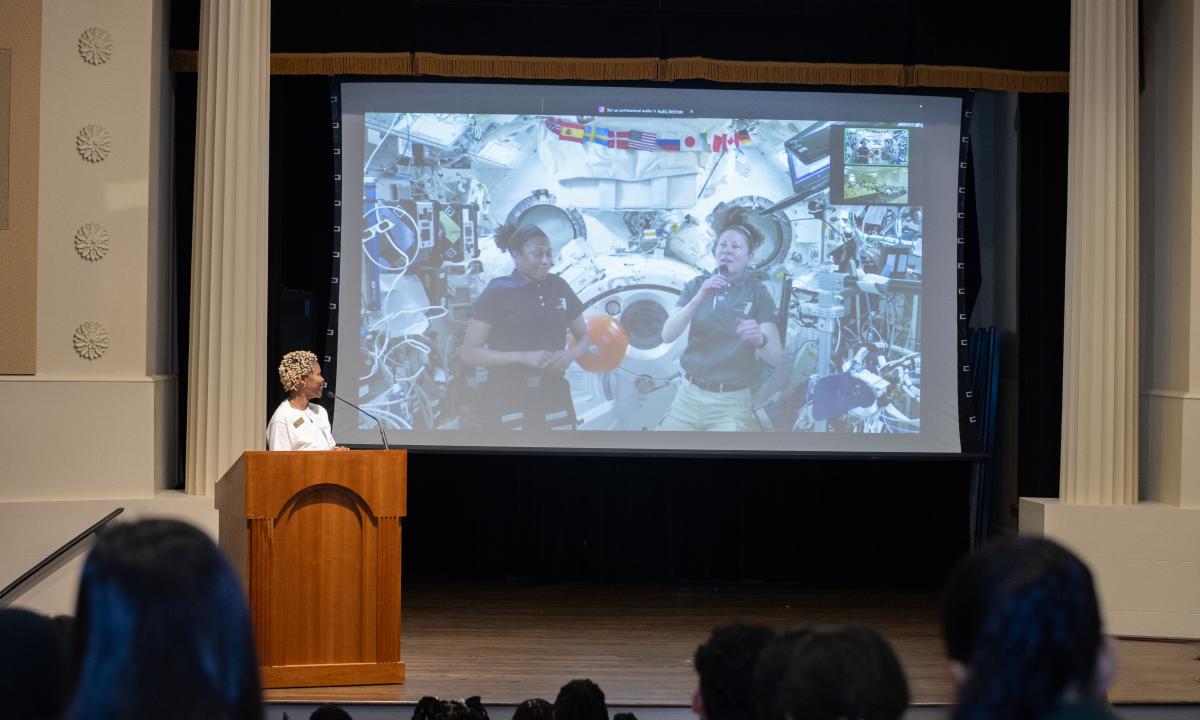
Women in Engineering Director listens to NASA astronauts Jeannette Epps and Tracy Dyson during a live call from the International Space Station. (Photo: Veronica Soroka)
On a very long-distance call, students from Georgia Tech and an Atlanta elementary school wanted to know how two women floating 220 miles above the Earth’s surface got there.
Not in the sense of strapping into a capsule atop a rocket, but rather how their passions and careers led them to be NASA astronauts aboard the International Space Station.
After all, it’s not every day you can gather a little bit of career advice from an actual space traveler.
“Find out what you really enjoy doing and pursue that thing,” said Tracy Dyson, who arrived this week for her second stint aboard the space station. “I think about my own upbringing, and my parents never told me or my sister that there was anything we couldn't do or that girls didn't normally do. My parents just let us do the things that we enjoyed doing. So I think what I would say more is to the parents than to the kids: If they show an interest in something, help open the door and pave the way. And let's see what they can do.”
Truthfully, the audience also asked about the physical journey to space along with the metaphorical one. They wanted to know about the food and life in orbit. And they asked about the science that’s keeping the 10 astronauts currently aboard the space station busy.
The conversation with Dyson and crewmate Jeannette Epps was just part of a day-long celebration of women in aerospace hosted by the Women in Engineering (WIE) program and the Daniel Guggenheim School of Aerospace Engineering (AE).
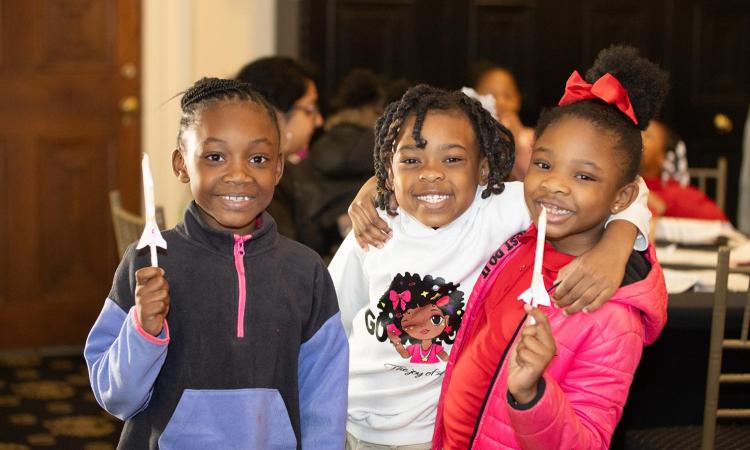
More Photos
See more photos from the day-long Celebrating Women in Aerospace Engineering event.
The March 28 event gathered Georgia Tech students and approximately 50 elementary school students from Atlanta's Tuskegee Airmen Global Academy to celebrate and explore the journey of women in AE research, education, and industry.
The day began with a miniature rocket-building activity for the youngest students, who worked alongside Tech students from WIE and the Society of Women Engineers. It ended with a special banquet in honor of Professor Marilyn Smith, the first woman to join Georgia Tech’s aerospace engineering faculty.
Smith is a three-time AE graduate and has taught AE students since 1997. She has secured more than $200 million in research funding through her work in the Guggenheim School and the Georgia Tech Research Institute. Currently, she is director of the Georgia Tech Vertical Lift Research Center of Excellence, a multi-university team program that trains the next generation of aerospace engineers and researchers.
(text and background only visible when logged in)
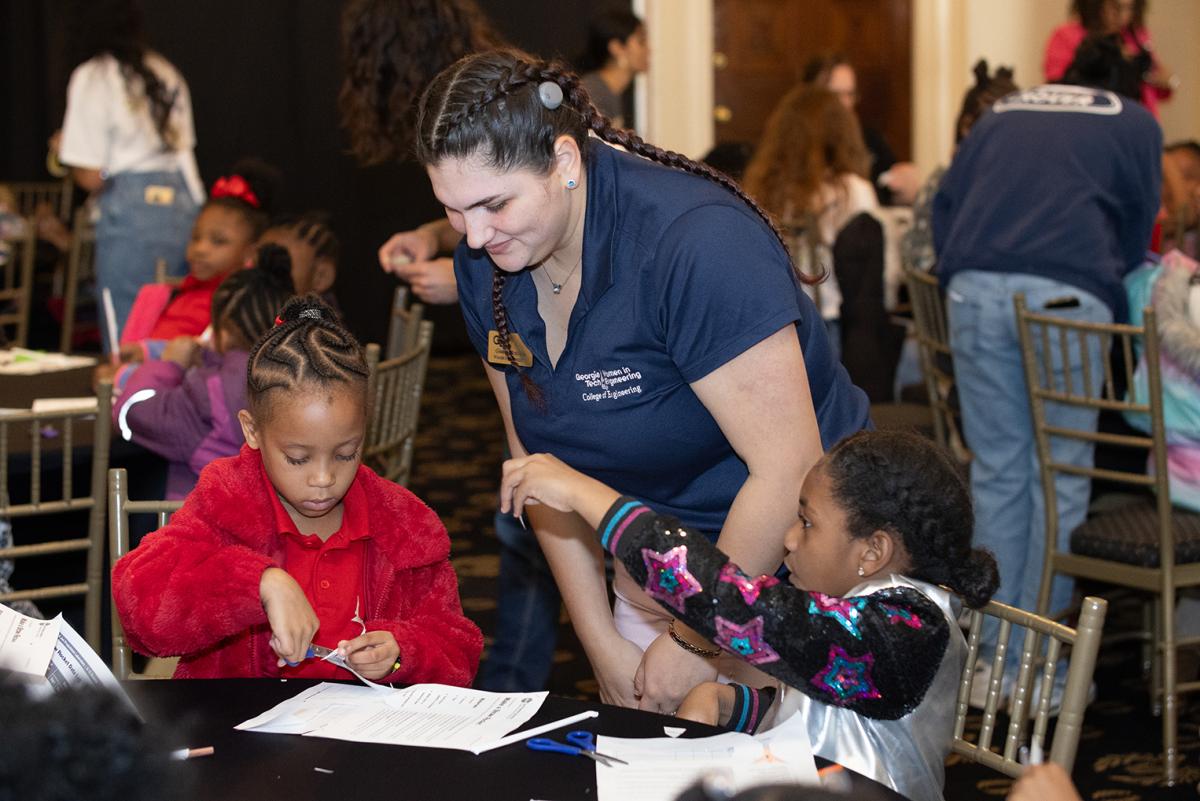
With the help of students from WIE and the Society of Women Engineers, elementary school students from Tuskegee Airmen Global Academy constructed paper rockets during the day-long Celebrating Women in Aerospace Engineering event.
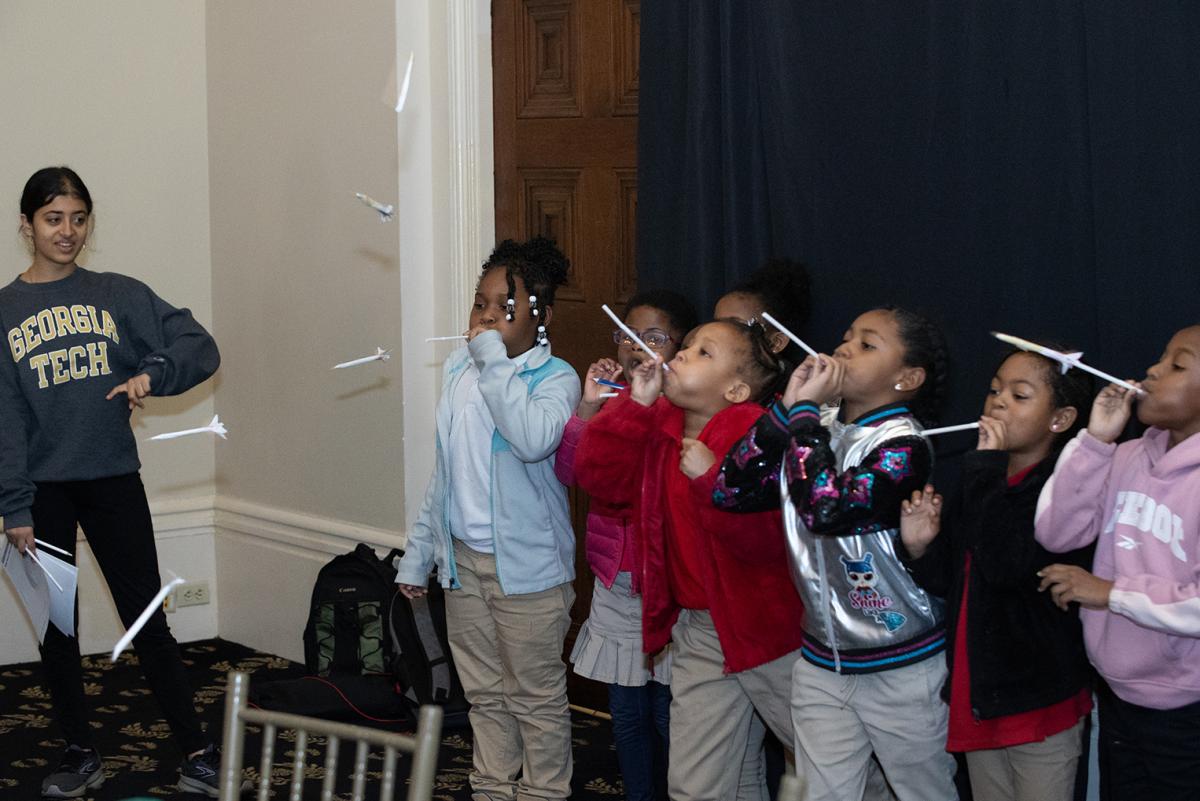
After they designed and built their rockets, the young girls used straws to "launch." (Photos: Veronica Soroka)
A lunchtime panel discussion focused on the journeys of four other women from different corners of the aerospace industry. Leaders from Airbus, Amazon, NASA, and Relativity Space shared their stories and advice about navigating the field as a woman and how to get started.
“Don't feel like you have to know exactly what you want to do for the rest of your life when you graduate,” said Sabrina Ussery, a senior systems engineer at Amazon Prime Air who earned her AE master’s degree from Georgia Tech in 2010. “Start with what you know. You may discover the things you thought you liked, you really don't really like. Or you may find out that there are things you have no idea about now that you will really love. Give yourself the flexibility to start and then pivot as you learn and grow.”
NASA’s Trudy Kortes shared advice she received when she was a graduate student co-op at NASA. The co-op group met with some of the agency’s flight directors, including Gene Krantz, legendary mission control director of Mercury, Gemini, and Apollo missions.
“He said, ‘If I can relate to you one thing it’s whenever I got assignments here, whether I liked them or not, I did them and did them to the best of my ability. And that was noticed. I didn't always hear it all the time, but hard work is noticed, and it's appreciated,’” recounted Kortes, now director of technology demonstrations at the space agency. “I think it’s still the No. 1 thing that will get you far in your career. I’m trying to follow his advice, and it’s certainly been true for me.”
The afternoon included a flight competition for undergraduates organized by the Yang Aero Maker Space and a session on mentoring to help graduate students map out their current mentor network, find gaps, and create a plan to fill them.
“We wanted students to learn about the many doors that are opened by earning a degree in aerospace engineering,” said WIE Director Joy Harris. “We hope they walked away thinking, ‘With an AE degree from Georgia Tech, I can be a pilot or an astronaut. Or I can have a successful career at Amazon or in academia. With an AE degree, the sky is literally the limit.’”
Related Content
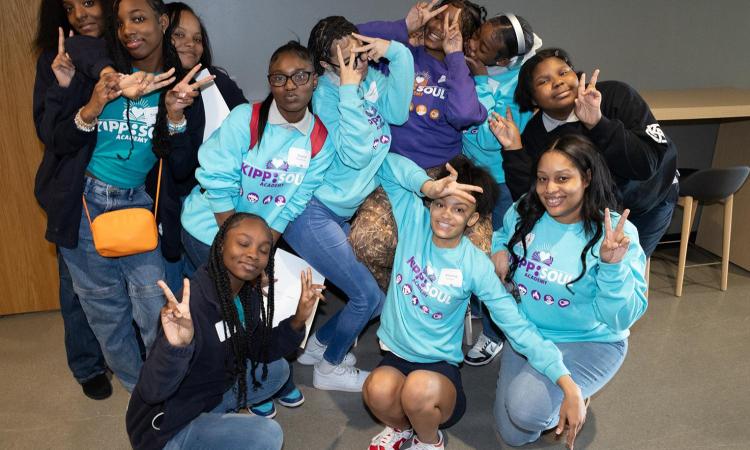
With Added Programs, Expanded Reach, Women in Engineering Charts a New Course
After helping increase the number of women undergraduates in the College, WIE expands to grad students and postdocs to build on its thriving community.
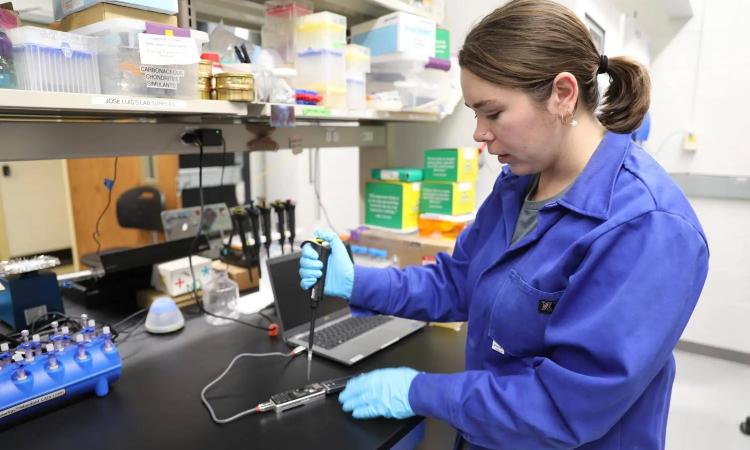
Researchers, Astronauts Studying Antibiotic-Resistant Bacteria in Space
Aerospace engineers created methods that space station astronauts will use to understand what kinds of resistant bacteria are present that could make astronauts sick. Their approach could mean longer and farther human space travel without having to send this kind of data to Earth for study.